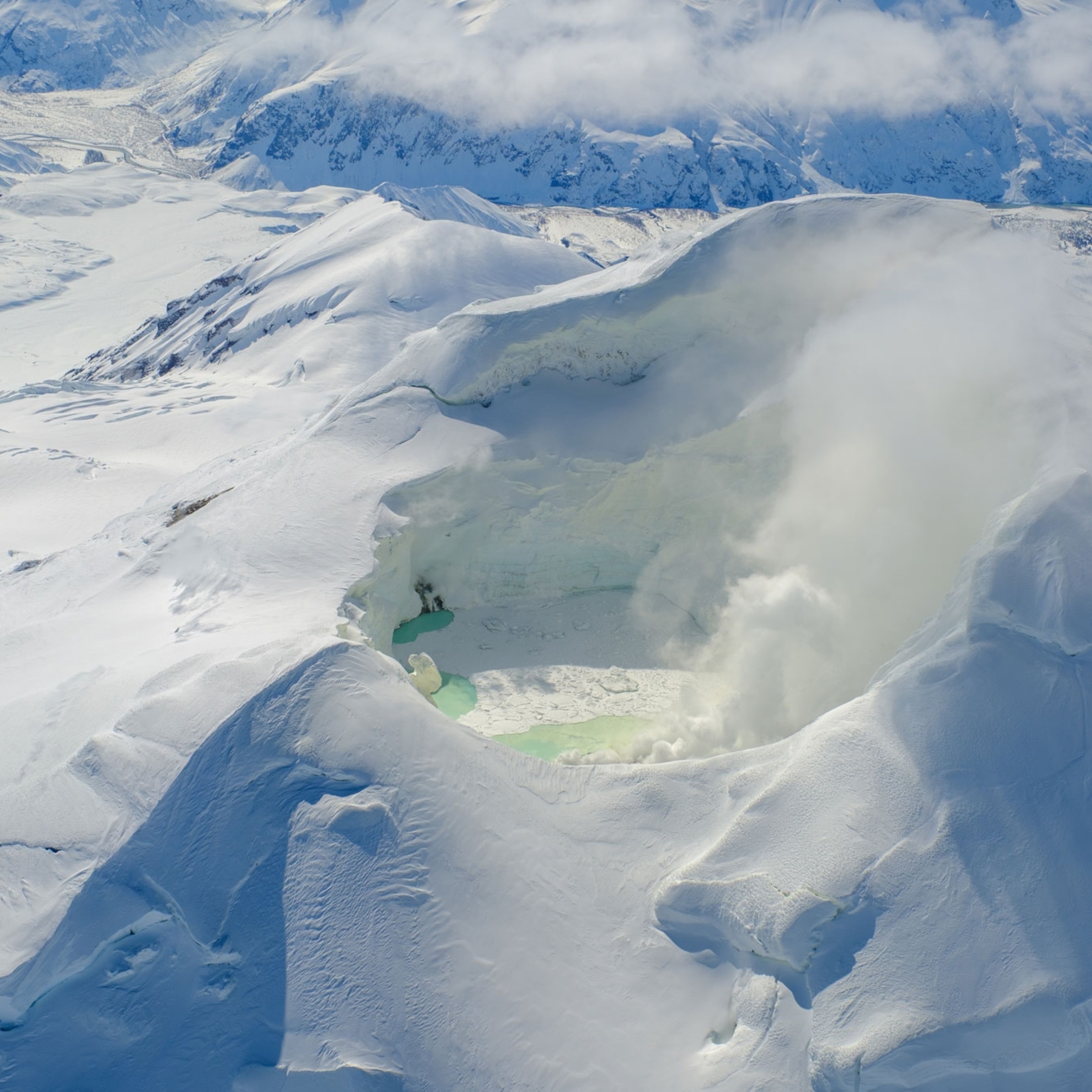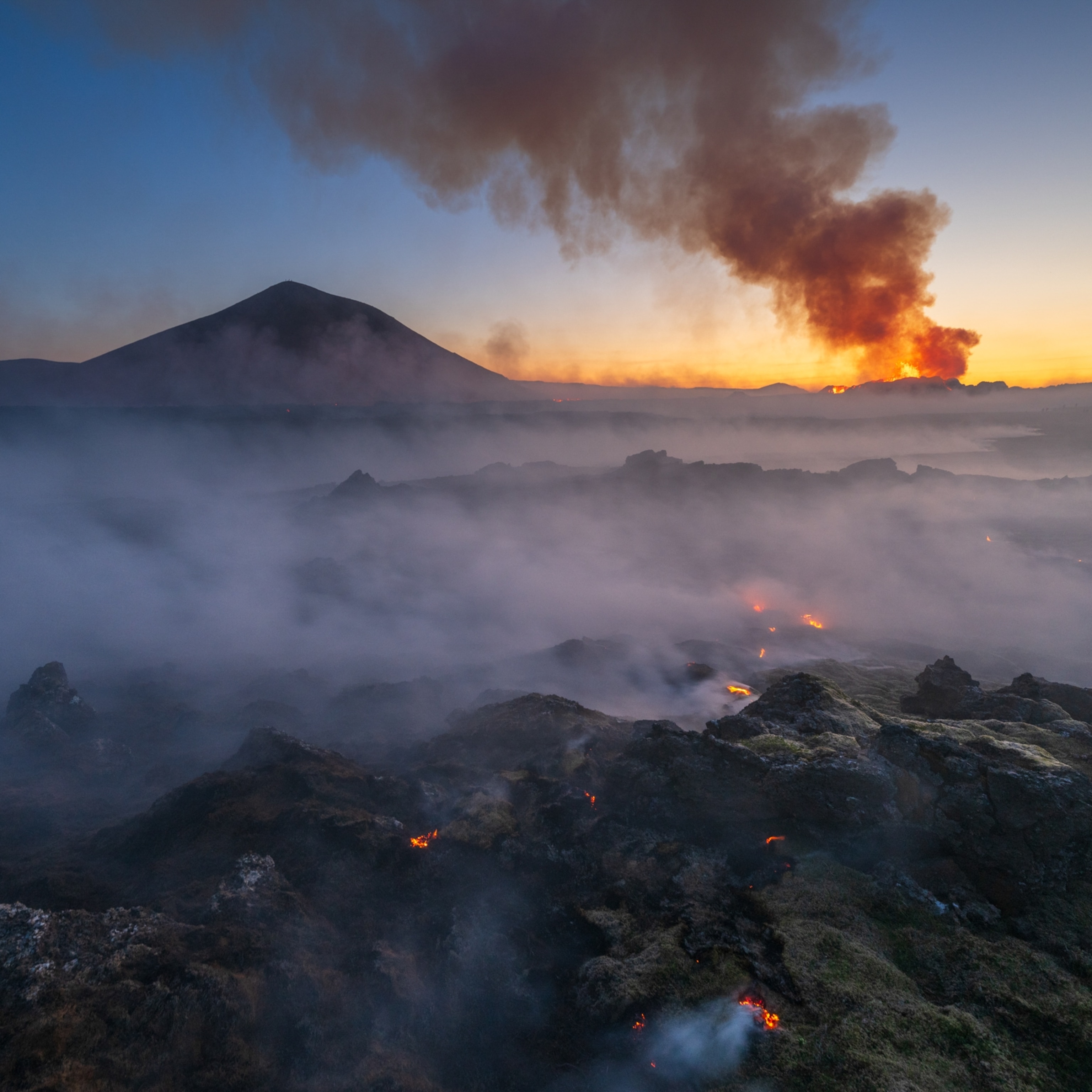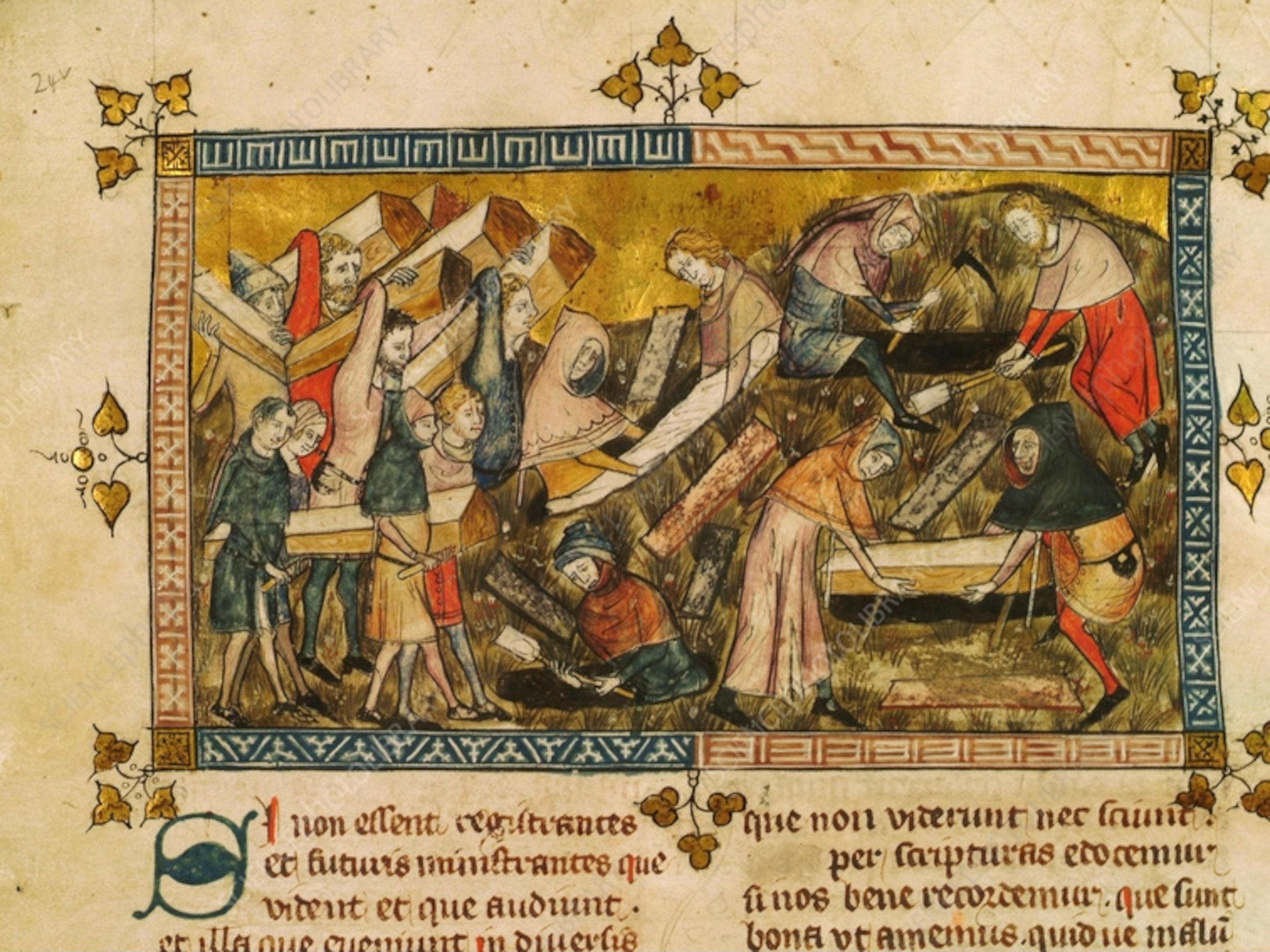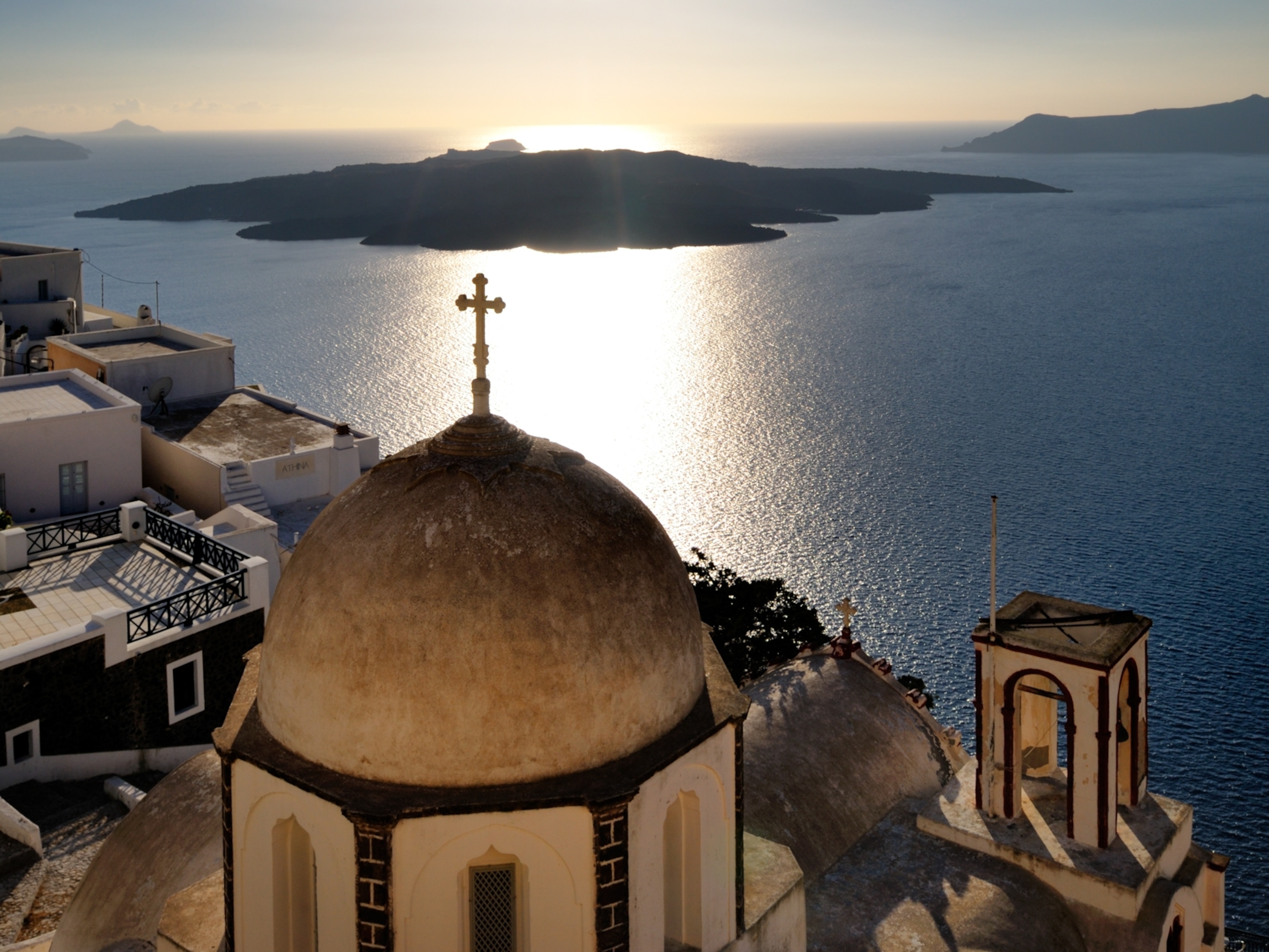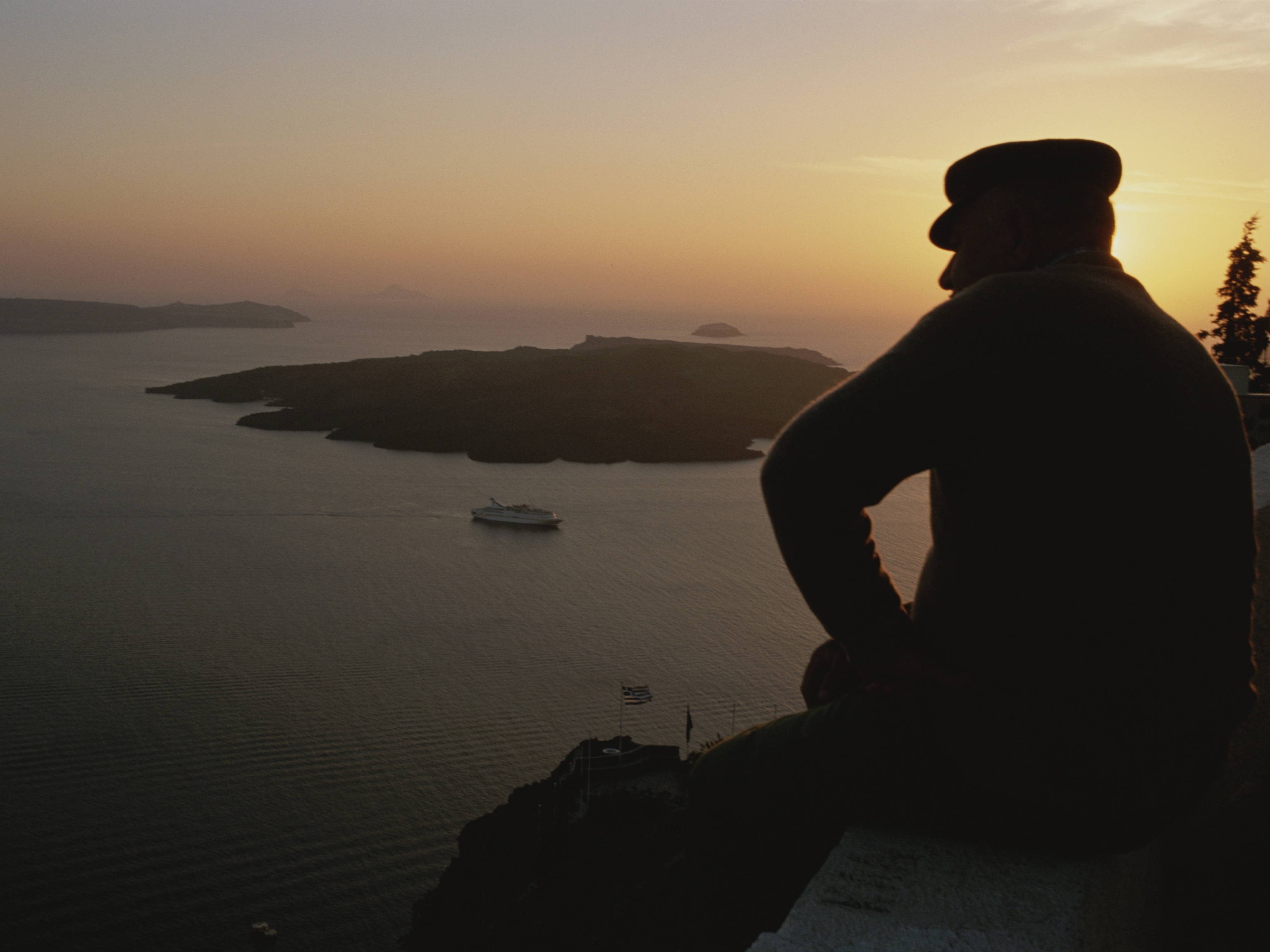Why the U.S. once bombed an erupting volcano
Can using explosives to divert volcanic destruction actually work? The first try in Hawaii set the stage for more attempts, but conditions for success are extremely rare.

When Hawaii’s expansive Mauna Loa volcano erupted in 1935, it sent serpents of red-hot liquid rock slithering toward the town of Hilo, then home to 16,000 residents. Normally, during eruptions, there’s not much anyone can do except get out of the way. But that year, scientists decided to try something a little different.
On December 27, a small squadron of Keystone B3 and B4 biplanes flew over the torrents of lava threatening Hilo and dropped 20 bombs onto it, totaling 3.6 tons of TNT.
For all that furious firepower, the bombing wasn’t meant to destroy Mauna Loa or even to stop its eruption—only to divert danger by collapsing the rocky channels and underground tunnels the lava was following toward Hilo. This military campaign was humankind’s inaugural attempt to redirect lava with explosives—and it wouldn’t be the last.
Robin George Andrews is the author of Super Volcanoes: What They Reveal about Earth and the Worlds Beyond, available at bookstores everywhere on November 2, 2021.
In the history of such diversion attempts, no method tried so far has prevented a crisis from unfolding. If the volcano continues to spew molten rock, all counter measures—no matter how technologically impressive—will eventually be overcome. “You can delay things,” says Tobias Dürig, a volcanologist at the University of Iceland. “But in the end, the volcano wins.”
Still, it’s not a totally hopeless endeavor, says Amy Donovan, a volcanologist at the University of Cambridge. Deflecting or diverting lava flows “can buy you time for evacuations,” she says. “It can buy people time to collect their belongings.”
So can strategic bombing during an eruption serve to protect people and places? As with much in life, the answer is complicated. This flamboyant method of disaster mitigation can work, but only if some very specific conditions are met—and some of those are down to nothing but luck.

Halting Hawaiian hellfire
Mauna Loa is an infamously hyperactive volcano. In response to its prolific eruptions over the past few centuries, the people of nearby Hilo—current population, about 45,000—have tried various ways to protect their property and livelihoods.
Summer 1881. Facing down an ominous eruption, villagers erected small rock walls, but those were swiftly engulfed by the fiery river of lava. So Princess Ruth Keʻelikōlani—the descendant of Kamehameha I, the founder of the Kingdom of Hawaii—arrived at the scene to pray to the volcano goddess Pele and provide material offerings, including brandy and scarfs. The lava flow did stop shortly afterwards, but had it not been stanched by the princess’s pleas, local authorities were prepared to set off an explosion at the front of the lava stream with a hefty supply of gunpowder.
November 1935. Officials returned to that explosive idea when Mauna Loa began erupting yet again. By December 23, it looked as if lava would reach the source of the Wailuku River, which supplied water to Hilo. As the lava cascaded through channels and subterranean tubes of its own making, they were not only directing the flow straight toward Hilo, but the underground tunnels were also keeping the lava insulated so it stayed molten for longer than it otherwise would be.
After consulting with his colleagues, Thomas Jaggar, the founder and director of the U.S. Geological Survey’s Hawaiian Volcano Observatory, decided that doing nothing was not an option.
“I don’t think that anyone has ever bombed a volcano with the idea that they’re going to make it stop,” says Arianna Soldati, a volcanologist at North Carolina State University. But Jaggar suspected that if channels and tubes could be partly destroyed, lava would spill out in different directions, and the supply of molten rock being funneled toward Hilo could be severed.
The notion of having people deliver the explosives on foot was considered and quickly dismissed. Instead, Jaggar sent a request to the U.S. military, asking if they wouldn’t mind dropping some bombs from above. On December 27, four days after Jaggar had made his request, the U.S. Army flew 10 biplanes over two target areas and struck both with their payloads of 600-pound MK I demolition bombs.
On January 2, 1936, the lava flow stopped, and Hilo was spared once again. Jaggar declared it to be a direct result of the bombing campaign, but some pilots and geologists expressed skepticism. Several bombs had missed their targets, and the ones that did hit their marks did not appear to cause the sort of topographical changes Jaggar had hoped to see. And, by sheer coincidence, the eruption’s rate of lava production dropped off around the time of the bombing, an event that provides a simpler explanation for the cessation of that hazardous lava flow.
April 1942. A similar bombing run was carried out on Mauna Loa during another of its paroxysms, right in the middle of World War II, when a chief concern was quenching light—from lava or bombs—that might help enemy flyers navigate. Much like its predecessor, the explosion did not appear to have a significant effect on the flow of lava, says Hannah Dietterich, a geophysicist at the USGS Alaska Volcano Observatory. As powerful as those explosives were, they were simply no match for the might of molten rock.
But 50 years later and half a world away, authorities dealing with another potential volcanic calamity decided to give explosives a fresh shot at glory—and this time it seemed to do the job.
Lessons from the Mediterranean
Mount Etna is a vertiginous volcano on the Italian island of Sicily that is famous for its near-constant activity. It has been erupting on and off since September 2013 and, throughout 2021, has engaged in a jaw-dropping display of largely harmless outbursts, with dozens of skyscraper-high lava fountains shooting skyward from its summit.
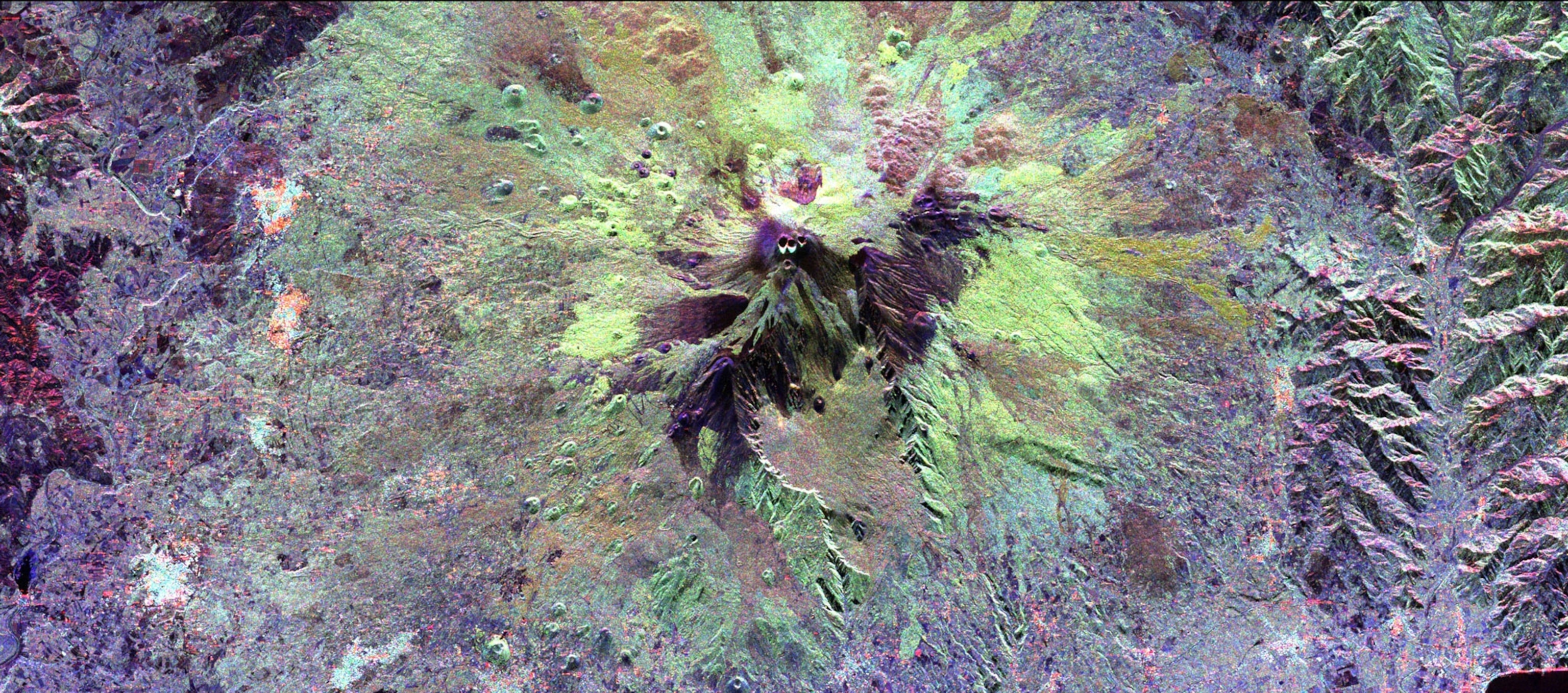
A magmatic convulsion that extended from 1991 to 1993 “was the longest lasting, most voluminous eruption of Etna in the past 350 years,” says Boris Behncke, a volcanologist at Italy’s National Institute of Geophysics and Volcanology. Its lava threatened the town of Zafferana Etnea, population 9,500, prompting authorities to look for creative solutions.
As it happened, a smaller eruption in 1983 had served as a trial run for bombing Etna’s lava flows. That year molten rock had paved over some farmland and had neared, but failed to reach, a nearby town. Sensing an opportunity and buoyed by public pressure to divert the lava, a decision was made to deploy explosives.
Wanting to be precise, engineers went on foot to plant the explosives, sliding them into small tubes dug out next to the lava channels. Unfortunately, the lava baked those tubes, turning them white-hot—and the engineers “feared that if they loaded the charges into these incandescent holes, they would explode prematurely,” Behncke says. The engineers sprayed water into the tubes to cool them down, but that caused dramatic temperature fluctuations that deformed the lava channel, causing molten rock to spill over the sides even before explosives could be deployed.
The 1983 experiment was a failure; the blasts excavated a new non-hazardous passageway for the lava, but not much of the flow changed direction, and the opening soon sealed itself. Still, it was a valuable pedagogical moment that prepared emergency responders for what would happen almost a decade later.
When Etna erupted again in 1991, earthen barriers were erected to try and stop the lava flow, but they were rapidly overrun. By the spring of 1992, “a lot of this lava had roofed over and was flowing through lava tubes, which is an excellent survival mechanism for a lava flow,” says Behncke. At one stage, the U.S. military was called in to help. Instead of dropping bombs, they chose concrete blocks: Several helicopters hovered over a skylight in the lava tube and released blocks into it in an ultimately fruitless attempt to dam the flow of lava within.
So in May 1992, engineers decided to try a similar tactic to the one used in 1983. A heroic dump truck driver first carved a relatively safe path up the lava-strewn mountain. Teams could then painstakingly scrape away material from the side of a lava tube, make openings, and plant explosives. This time around, they knew exactly where to plant them—all 7.7 tons of the volatile stuff—to achieve the desired results.
“They lit this immense charge of dynamite and blasted this whole thing to smithereens,” says Behncke.
Most of the lava poured out into a series of artificial channels, where it cooled and hardened. A few hours later, the lava flow endangering Zafferana Etnea stopped. “That was a successful operation,” says Behncke. The town’s temporary salvation became more enduring when, soon after, Etna’s eruption settled down.
To bomb, or not to bomb?
Why did that one attempt work when the other failed? According to Dietterich, to succeed, a lava flow diversion operation needs several key components. It must have something like a lava tube or channel that can be drained, precisely chosen spots where the tube or channel will be opened, and somewhere harmless for the lava to be redirected.
“It’s a very specific scenario, and much more specific than the public realizes,” says Sophia Tsang of the University of Auckland in New Zealand, who researches lava flow hazards. A diversion blast site must also be on a fairly steep slope, as lava will follow the line of steepest descent. Etna is a tall volcano with high slope angles. The shield volcanoes of Hawaii have far gentler slopes, making the use of explosives to drain lava channels not worth considering in many cases.
Even if the fissures emerged further upslope and there was time to use explosives to divert the flow, the legal ramifications could be problematic. Perhaps you could deflect the lava away from a UNESCO World Heritage site—only to watch it plow into a modern housing complex instead, because of your actions.
“You need to be able to divert it to somewhere where there is nothing—no private property, no infrastructure, nothing,” says Soldati. That is rarely the case. Just look at the 2018 flank eruption of Hawaii’s Kilauea, or the ongoing eruption of La Palma’s Cumbre Vieja volcano: In both cases, eruptive fissures opened right next to people’s houses, making any use of explosives to divert that lava reckless.

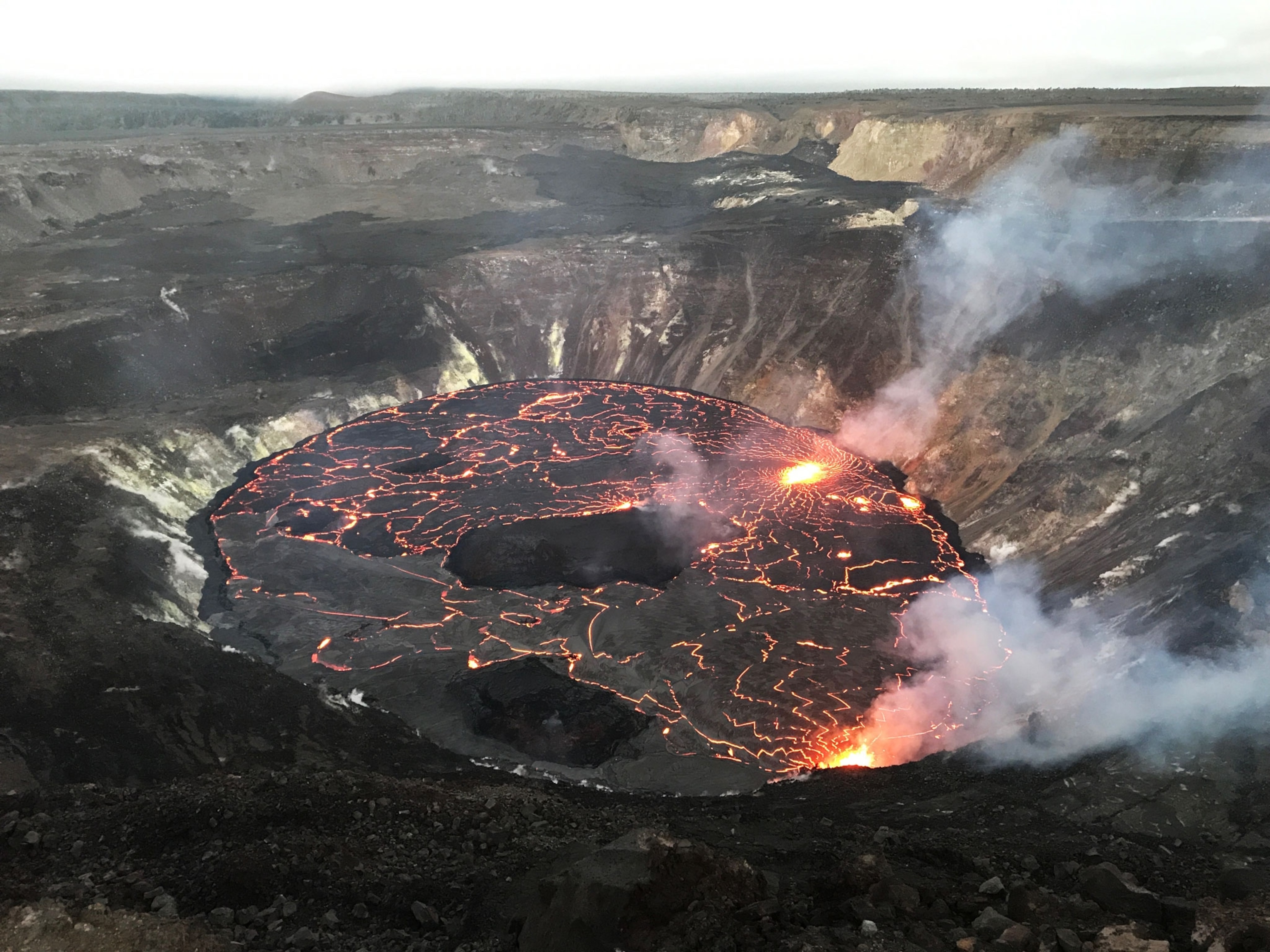
In many cases, “you’re always going to end up seriously inconveniencing somebody,” says the University of Cambridge’s Donovan.
What’s more, many people living in Hawaii have a significant spiritual connection to the state’s volcanoes—and bombing them is considered to be an offensive act.
The path of peace
There are other, less dramatic ways to divert lava flows, according to a recent study by Tsang and her colleagues.
The 1973 eruption of Eldfell volcano on the Icelandic isle of Heimaey threatened to consume a nationally important harbor. Emergency responders managed to slow down the lava flow by spraying it with billions of gallons of seawater for five months straight, an act of epic quenching that stopped only when the eruption itself ran out of juice. But this method is unlikely to be recreated anywhere that isn’t by the sea.

Barriers designed to impede or redirect the flow of lava are a far more commonly deployed method. “They seem to more reliably buy time than bombing does,” says Tsang.
Unlike bombing, you can situate barriers around volcanoes prior to an eruption. There is some talk about placing them around Nyiragongo, an extremely dangerous volcano in the Democratic Republic of the Congo that erupted to devastating effect this past May. But this sort of proactivity is not always possible. Lava often gushes out of fissures and vents that open unpredictably across a wide expanse on a volcano, making the preemptive placement of barriers difficult.
“Lava is not a standard fluid,” says Stavros Meletlidis, a volcanologist at Spain’s National Geographic Institute. It makes its own topography and applies a bulldozing-like force and scorching heat to its surroundings. It acts the part of a feral hadean beast, changing direction and speed on a whim.
Anyone trying to stop an eruption’s destructive rampage, says Dietterich, must remember that they are “very much at the mercy of the volcano.”
Because no matter what you put in its way, Donovan says, “if the thing keeps on erupting, it’s going to overcome all your barriers and big holes in the ground anyway.”

